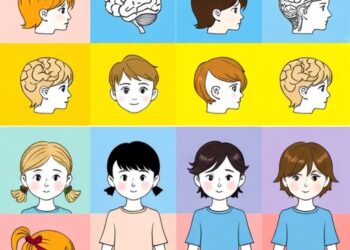Social media’s rise to popularity between 2010 and 2020 has been strongly correlated with the nationwide freefall in youth mental health that characterized the 2010s. Lawmakers have put increasing pressure on the U.S. government to take social media regulation more seriously, with cases about platforms like Facebook, Instagram and X rising to the Supreme Court level.
Social media’s rise to popularity between 2010 and 2020 has been strongly correlated with the nationwide freefall in youth mental health that characterized the 2010s. Lawmakers have put increasing pressure on the U.S. government to take social media regulation more seriously, with cases about platforms like Facebook, Instagram and X rising to the Supreme Court level.
But despite the ubiquity of social media, scientists at Northwestern Medicine and Ann & Robert H. Lurie Children’s Hospital of Chicago found that in Illinois, youth emergency room visits and hospitalizations for depression and anxiety decreased after the COVID-19 shutdown and have plateaued at lower, pre-2016 rates.
“We wanted to see if COVID exacerbated the problem or changed it in any way,” said Northwestern’s Joe Feinglass, the study’s lead author. “And the answer was somewhat to our surprise that COVID actually reduced the number of emergency room visits, which was expected during the shutdown but was sustained into 2023.”
The study, published Aug. 5 in The American Journal of Emergency Medicine, analyzed all ER visits and admissions from Illinois youth with a coded primary diagnosis of depression and anxiety from January 2016 to June 2023, collecting data from 232 hospitals across the state. The authors offered speculation on what caused the spike, then the sustained decline, in youth ER visits — though not inpatient psychiatric hospitalizations — during the study period.
Feinglass said while he initially was uncertain about factors that correlated to his findings, over time he has become convinced that social media use is by far the “most credible” reason for the 2010’s surge in ER visits and hospitalizations for depression and anxiety. Feinglass is a research professor of medicine at Northwestern University Feinberg School of Medicine.
“Social media is something that affects teens’ lives and young people’s lives in a day-to-day, hour-to-hour way,” Feinglass said. “The number of teenagers that had a smartphone in 2012 was around 5%. By the time we’re done with this period, 85% have a smartphone. The number of hours of sleep goes down, the interactions with other people go down. So to the extent that you’re on these screens, your screen time kills your ability to have actual social interaction.”
The drop in ER visits since the pandemic shutdown could indicate that youth have hit a ceiling in their social media use, causing a plateau in ER visits and admission rates, he said, adding the use of smart phones may have created new forms of otherwise impossible in-person socialization through video chat technology.
Though there was considerable fear that school shutdowns could exacerbate poor mental health, staying home with families for the first year and subsequent anecdotal reports from teachers imply that school may have gotten easier, which may have reduced what teens report as their number one stressor.
The study also assessed patients based on zip code, gathering localized data about the percent of residents living in poverty. Data show the decrease in visits was smaller for girls than boys, greater in areas with lower incomes and for visits to smaller community hospitals.
Outpatient ER visits for depression and anxiety, in which patients are sent home rather than being admitted to the hospital, declined the most sharply, with in-patient hospitalization rates remaining constant across the study timeline — something the authors say may be owed to the fixed number of psychiatric hospital beds available to young mental health patients.
In-patient hospitalization rates, however, indicate the youth mental health epidemic is continuing, said Feinglass, but the current stable rate of visits may just reflect a saturation point of youth social media use.
“COVID may have led to improvement and innovations in mental health services,” Feinglass said. “With telehealth, there’s been a huge increase in the amount of counseling that’s available online and by phone. Mental health hotlines are also more readily available.”
The authors say just increasing the number of psychiatric beds or therapists is insufficient, and instead, changing social and cultural conditions upstream are needed to shift the epidemic’s trajectory. Senior author and Lurie Children’s attending physician Audrey Brewer added that updated pediatric primary care practices, including mental health screenings, can ensure children receive intervention for mental health challenges before they reach a crisis point.
“We need a better understanding of how to move youth mental health care away from emergent hospital care to more effective home and office settings,” Brewer said. “There is also an ongoing debate about how best to restrict addictive cell phone and social media use by children and teens.”
Journal
The American Journal of Emergency Medicine




